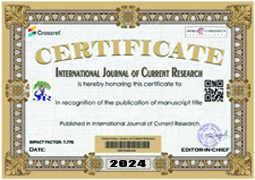The Primary objective of a business undertaking is to earn profits. Profit earning is considered essential for the survival of the business. Profitability analysis measures how will a firm is performing in terms of its ability to generate profits. Profitability of the firm is highly influenced by internal and external variables, i.e., size of organizations, liquidity management, growth of organizations, component of costs and inflation rate. In this paper an attempt has made to measure the profitability performance and to analyze the impact of selected profitability ratios on ROE of the company, for fulfillment of the objectives the data collected from the annual report from 2002-03 to 2011-12; the collected data is analyzed and computed to fit for drawing inferences. In this investigation correlation and multiple regression analysis were used to find out the impact of selected profitability ratios (Gross Profit, Operating Profit, Net Profit, Earning per Share and Return on Total Assets) on ROE. The result reveals that selected profitability ratios have significant impact on ROE.





